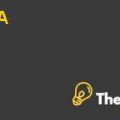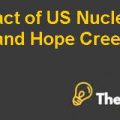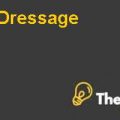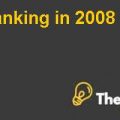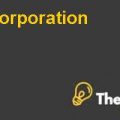
Question 1: Why would Machinery Internationals enter into a Forward Exchange Contract?
DEFINITION OF FORWARD EXCHANGE CONTRACTS:
It is a peculiar type of foreign currency transaction. Forward contracts are agreements between two parties to exchange two different currencies at a specific time in the some near future. These contracts always take place on a date after the date that the spot contract settles and that are used to protect the buyer from the risk of fluctuations in currency prices. A forward currency contract—also recognized as foreign currency contract is an arrangement between the troupe and the bank in which the depository financial institution agrees to purchase or trade a certain sum of money in a foreign currency at a specified rate of exchange on or during a period up to, a particular date.
If a company wants to enter into the market as an exporter contract in a foreign currency, a forward exchange contract allows it to determine at the time it sign the contract the exchange rate which will apply to future payments from its subsidiaries. These contracts are not traded on exchanges and standard amounts of currency are not traded in these agreements. These contracts cannot be canceled except by the mutual understanding of both parties involved. The parties involved in the contract are generally interested in hedging a foreign exchange position or taking a speculative position.
BENEFITS OF ENTERING IN FORWARD EXCHANGE CONTRACTS:
The forward exchange contract is a method used by companies to eliminate or hedge their foreign exchange risks arising from the foreign exchange transactions. There are generally two types of Forward Contracts: a fixed forward exchange contract and a forward option contract.
TYPES OF FORWARD EXCHANGE CONTRACTS:
A fixed forward exchange contract states the type and amount of foreign currency the bank will buy, the agreed exchange rate and the specific date on which the company will pay the foreign currency to the bank after receiving it from its foreign subsidiaries.
A forward option contract states a period of time, rather than a specific date, during which the bank will exchange the foreign currency for parent’s local currency. The bank may quote different exchange rates in a fixed forward exchange contract and a forward option contract.
TERM OF FORWARD EXCHANGE CONTRACTS:
The term of a forward exchange contract can run from a few days to more than 12 months. A forward exchange contract can state a number of agreed exchange dates, with corresponding exchange rates, in order to match the payment dates under your export contract (for example, if the parent company receiving payments from its subsidiaries in instalments).
If the company has several export sales contracts or in this case several subsidiaries making royalty payments in a particular foreign currency, a forward exchange contract can cover payments under all of those contracts.
COST OF THE CONTRACT:
The Bank fees or charges for a forward exchange contract may vary depending on the terms of the agreement with the bank.
BENEFITS TO MACHENERY INTERNATIONAL:
Machinery internationals, a US based Multinational Corporation, sold advanced computer-controlled production equipment on a worldwide basis. The company had manufacturing and sales offices in different foreign countries. In the case of machinery Internationals, they must enter into the forward exchange contract as they are receiving royalties from its subsidiaries from outside the US in their local currencies.
Question 2: Is the forward exchange contract a derivative?
DEFINITION OF DERIVATIVES:
A derivative is a special type of contract that derives its value from the performance of one or more underlying entity. This underlying entity can be an asset, index or interest rate and is often called the “underlying”. It can be used for many purposes which includes insuring against price movements (in other words “hedging”), increasing exposure to price movements for speculation and getting access to trade assets or markets. The security whose price is dependent upon or is derived from one or more underlying assets. The derivative itself is a contract between two or more than two parties. The value is determined by fluctuations in the underlying assets. The most commonly used underlying assets are stocks, bonds, commodities, currencies, interest rates and market indexes. Most derivatives are highly leveraged.
ELEMENTS OF DERIVATIVES:
Some of the common elements of derivatives include forwards contracts, futures contracts, options, swaps and mixture of these such as collateralized debt obligations, credit default swaps and mortgage backed securities. Most derivatives are traded over-the-counter (off-exchange) or OTC on an exchange where there are no proper exchange counter is present, while most insurance contracts have formed into a separate industry (Insurance Companies) under their own separate laws and regulations. Derivatives are one of the type of financial instruments, the other types being equities (i.e. stocks or shares)................
This is just a sample partial case solution. Please place the order on the website to order your own originally done case solution.
Assistant to prepare illustrative derivative and hedge accounting examples of the audit committee. Students must complete examples. Learning Objective:. Introduces students to the basics of derivatives and hedge accounting "Hide
by David F. Hawkins Source: Harvard Business School 5 pages. Publication Date: December 5, 2000. Prod. #: +101061- PDF-ENG


